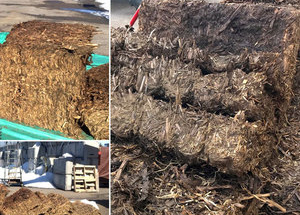Are you planning a trip to Vietnam and wondering if Hanoi is worth a visit? With amazing architecture, one of Asia’s most exciting street food scenes, and endless cultural sites to explore, the answer is definitely yes! It’s surprising that the 1,000-year-old Vietnamese capital doesn’t rank among the country’s largest cities. This title belongs to Ho Chi Minh City, located in the southern metropolis of Vietnam. Hanoi, in the northern Red River Delta region, remains the country’s political and cultural center. Check out more on https://emperornote.com
Hoan Kiem Lake is at the heart of Hanoi, from which the city spreads out. Most of Hanoi’s tourist attractions, hotels, restaurants, cafes, and bars are located in the Old Quarter. You can join the crowds, bikes, and cars making their way through the winding old streets or escape to the quieter lanes of the French Quarter.
We’ve compiled 7 reasons to visit Hanoi, from hunting down the most Instagrammable spots to exploring the city’s wealth of unusual museums to exploring some of Vietnam’s best tourist destinations from Hanoi.
1. Hanoi is the Cultural Capital of Vietnam
Ho Chi Minh City might be bigger and economically stronger than Hanoi, but Hanoi dazzles when it comes to culture. There are many important cultural sites in the city, including the Ho Chi Minh Mausoleum and the Ngoc Son Temple. A total of 15 fascinating museums are located here, covering everything from fine art to traditional medicine and even the role of Vietnamese women throughout history. Vietnam Museum of Ethnology is a good place to start. More than 15,000 artifacts from the collection demonstrate traditional Vietnamese ways of life as well as the heritage and culture of the 50+ ethnic groups that live in Vietnam.
Hanoi isn’t just known for its museums and historic sites; it has a thriving arts scene as well. At Hoan Kiem Lake, you can discover the ancient art of water puppet theatre. From the knee-deep water of the lake, you can watch puppeteers recreate stories of Vietnamese folklore using beautifully decorated puppets.
2. The City is One of Asia’s Most Exciting Street Food Destinations
Do you love street food? There is no better place to visit than Hanoi! As a result, the city is one of the most diverse and flavor-rich areas of Asia. When it comes to lists of the best cities to try street food, Hanoi is often overlooked in favor of Ho Chi Minh City. The city of Hanoi offers more than its fair share of delicious local delicacies and ancient recipes to those who have visited before.
Try Bánh Cu*n Gia’s bánh cu*n (steamed rice rolls) for a taste of classic Hanoi Truyền. Hand-rolling them is an art form in itself. Additionally, you should try the now-famous B*n Ch* H**ng Liên for their grilled pork, broth, rice noodles, and greens. From the outside, this place looks like any cheap restaurant except for the long line. Inside, you’ll find a table (now encased in glass) where Anthony Bourdain and Barack Obama once chatted over bowls of b*n ch* and cold Vietnamese beers for the 2016 Hanoi episode.
3. Hanoi is a Photographer’s Paradise
Hanoi offers endless opportunities for picture taking, whether you’re a budding photographer or Instagram star. A backdrop of yellow colonial buildings and leafy lanes awaits you in the French Quarter. Or pull up a plastic chair at any coffee shop in the Old Quarter and snap street scenes of locals in the iconic nón lá. Explore Hoan Kiem Lake early in the morning to see Hanoi’s residents going about their daily lives and capturing the perfect misty shot of Ngoc Son Temple.
A trip to Hanoi’s Train Street is a great photo opportunity. On Ngo 224 Le Duan lane, in Hanoi’s Old Quarter, a train speeds past buildings and locals at an alarmingly narrow distance twice a day. On the old route that leads south to Ho Chi Minh City, visitors can watch laundry, chairs, and stalls being folded away as the train approaches. In the meantime, playing children are ushered inside by locals pressing up against the walls or dipping into the doorways. When the next train comes, everything is returned to its previous position and the whole process is repeated.



